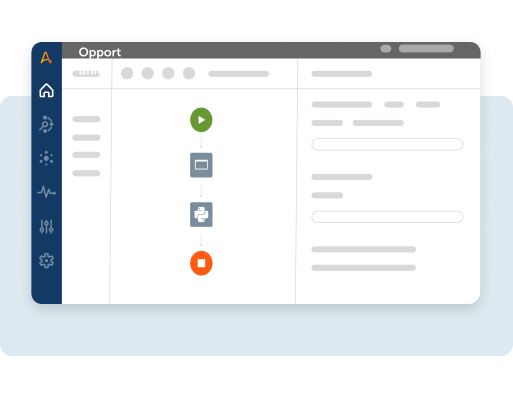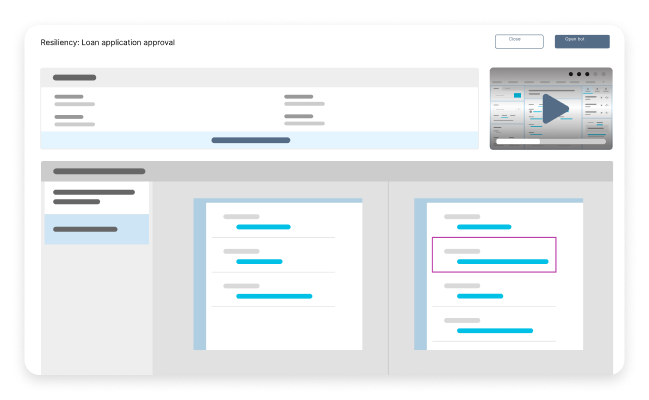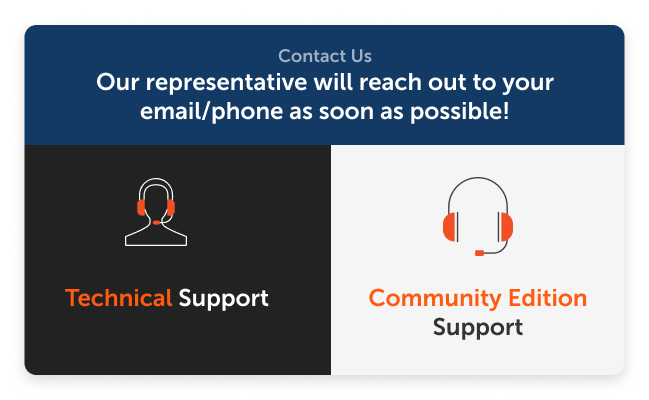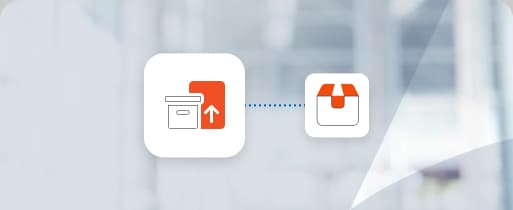Service level agreements (SLA) are integral to the service vendor lifecycle. However, typically each vendor relationship has unique SLA complexities. Therefore, monitoring all your service-level agreements (SLAs) can be challenging.
Implementing workflow automation has become increasingly common to ensure efficient service delivery across departments. Automation removes much of the guesswork and allows you to monitor the standards you’ve set accurately. In addition, it will enable you to check whether you’re on track by reviewing your SLAs regularly and tracking their implementation.
With SLA automation powered by robotic processing automation (RPA), you can easily track and report on response times and other performance indicators. You can also streamline workflows, send notifications when KPIs are not met, and call out vulnerabilities in the automation stream, all in real-time.
What are the benefits of SLA automation?
Knowing how to manage service-level agreements correctly is essential for organizations' health, but many companies aren't sure how to automate their processes. A proactive approach to SLA management will help you improve your organization's service by speeding up resolution times and increasing customer satisfaction.
Improve Workload Management
Automation Anywhere's RPA solution helps ensure you maintain SLAs, thanks to workload management (WLM). WLM manages the work queue, automating the prioritization of bots and allowing manual prioritization of high-value transactions. In addition, WLM has a built-in SLA calculator and offers RPA as a Service capability to match business needs.
Optimize Resource Usage
WLM securely divides and processes workloads into segments across multiple devices, allowing for optimal resource usage. Via the Control Room, you can prioritize bots according to functionality and necessity. You can also enable the support team to deploy, schedule, audit, and manage the organization's bots from a single location.
Ensure Compliance
Compliance with strict service-level agreements is essential for a healthy data infrastructure. Automation helps you ensure compliance 24/7 with human intervention, allowing your business to meet the most stringent requirements of data service quality.
Gain Greater Security
Especially on the cloud, it's imperative to keep your data center secure and be able to quickly audit business processes on time. SLA automation provides greater control over security policies and granular role-based access control to apply human security standards to bots.
Monitor SLA Conditions
RPA provides additional functionality to service level agreements, ensuring the customer experience remains high quality. For example, if the SLA promises the help desk will respond to open tickets within a half-hour, automated time tracking and notifications when the time is close to expiring ensures the SLA isn't breached.
Streamline Agreement Creation
Departments and services require different conditions when creating agreements. For example, IT services may need to add uptime/downtime parameters, escalation processes, or service desk response timeframes. With a digital workforce, stakeholders can choose between conditions from a single screen to easily create, monitor, and manage SLAs.

Keep Service-Level Agreements in the black with RPA
Deliver on time with Service Level Agreements (SLAs) and cloud-native robotic process automation.
Request demoWho benefits from service-level agreement automation?
Agreements are the north star of service-customer interactions, both external and internal. Create SLAs between departments and stakeholders, company and clients, and automate their management to reach every organization area.
IT Department
SLAs are invaluable for tech companies and departments alike. Automation reduces ticket backlog through workflow escalations. In addition, it provides a second degree of service management, allowing IT teams to identify service tickets about to cross SLA levels quickly.
Sales and Marketing Teams
Creating SLAs is critical to building bridges between the notorious sales and marketing silos. By automating agreements, teams can monitor how well they're integrating, locate the bottlenecks, and maximize the sales funnel.
Management and Leadership
Monthly monitoring and reporting for multilevel SLAs are made more straightforward via automation. Bots running SLA reports can also provide deep insights into improved processes, which is the first step to improving business processes.
Staff
Automation is all about removing the repetitive processes that take up so much of an employee’s time. For example, SLA automation puts managing agreements, and all that entails on a “set it and forget it” level, as the related bots notify stakeholders when issues arise and need human intervention.
Santander consumer bank saves $2M on systems migration with RPA
$2M
Saved on systems migration
30,000+
Hours saved in 2019
150
Bots in production
How service level agreement automation can help your business?
Service level agreement automation helps your teams stay on track, reduces unnecessary workloads, builds a sense of trust in your staff, and leads to happier customers. Adding RPA to your agreements allows you to support your entire organization, from management to entry-level staff. It also allows you to manage and exceed customer expectations.
Create better SLAs
- Easily map the service provision process.
- Define SLA exclusions that trigger the need for human intervention.
- Set automatic triggers for SLA suspension mechanisms.
- Locate gaps in SLAs and use them to improve future agreements.
- Set performance monitoring, risk assessment, and critical service analysis for continuous improvement
Set and meet customer expectations
- Alert key stakeholders when an SLA is about to be breached.
- Alert customers if a ticket needs their response.
- Automate SLA creation based on services provided to customers.
- Send out reminders when a ticket is waiting on customer response.
- Use audit trails to locate the reason for breaches when they do happen.
- Set and automatically monitor escalation dates for faster response time.
Easily manage agreements
- Set ticket priority based on a customer’s SLA.
- Create resolution times and response plans for each type of SLA.
- Track stakeholder actions and responses to locate business process optimization opportunities.
- Swap and roll out updated SLAs via simple forms and Automation Co-Pilot.
- Quickly assign critical stakeholders throughout the company.
- Create custom schedules for ticket matching for maximum flexibility.
Measure, monitor, and optimize
- Get a complete overview of service delivery activity for single and multi contracts, regions, and entity data.
- Easily set up new tasks and get a job done.
- Get a clear overview of the current status of tasks, see who's working on what, and who's still available.
- Stay on top of new requests with tailored notifications.
- Fixes to common errors are automatic—no need to sift through queues or spend time on tedious work.
- Accurate forecasting of necessary stakeholders based on SLA outline.
What to look for in a service-level agreement automation provider?

Now is the perfect time to implement automation in your organization’s processes. Automation Anywhere’s RPA solutions allow you to meet - and beat - the requirements of SLAs, using attended and unattended automation.
SLA automation doesn't need specific infrastructure with cloud-native end-to-end intelligent automation solutions like Automation Anywhere. Your organization can be on the cloud, a hybrid of cloud and onsite, or completely on-premises. In addition, our proprietary services, Automation 360 and Automation Co-Pilot, easily integrate with legacy software, APIs, web pages, apps, and even custom software.
Besides infrastructure and software integration, what should you look for? First, you need a solution that scales with your business, so you only automate what you want rather than an all-or-nothing system. You want it to be flexible, able to implement with the least amount of business interruption, and have the necessary level of security to keep customer information safe.

How to get started with service-level agreement automation provider?
You can contact us for a demonstration led by our experienced automation experts. They can walk you through the various products and options, answer questions, and help you develop a proof of concept.
Finally, you can sign up with Automation Anywhere University and learn about automation through visual, hands-on learning.
Request demoMore SLA automation resources
Get to know the Agentic Process Automation System.

For Students & Developers
Start automating instantly with FREE access to full-featured automation with Cloud Community Edition.






